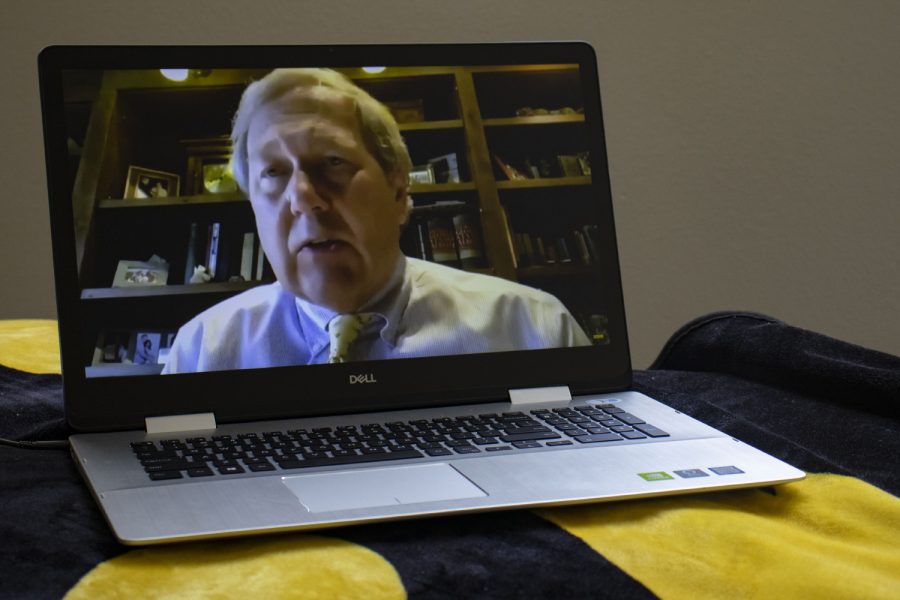UI explains reason for virtual instruction after Thanksgiving, full tuition costs at first virtual campus forum
President Bruce Harreld and Senior Vice President for Finance and Operations Rod Lehnertz discussed the overall plan for the fall 2020 semester and answered questions from the UI community about costs and health and safety.
University of Iowa President Bruce Harreld hosts a live stream with Senior Vice President for Finance and Operations, Rod Lehnertz, over Youtube on Wednesday, June 24, 2020. This is the first in a series of virtual updates where UI administration present different elements of their plan for campus during the fall 2020 semester, which was announced on June 17. (Hannah Kinson/The Daily Iowan)
June 25, 2020
In the University of Iowa’s first virtual campus update meeting on Wednesday, President Bruce Harreld and Senior Vice President for Finance and Operations Rod Lehnertz responded to questions about tuition payments and details surrounding the UI’s fall plans.
Lehnertz said full tuition would be necessary for the fall semester.
The UI is facing massive budget losses from the disruptions caused by COVID-19. The College of Liberal Arts and Sciences will not be renewing contracts for 15 instructional-track faculty, as previously reported by The Daily Iowan.
“The full tuition is necessary to cover any ongoing operations, including retention of our faculty and staff needed to provide that instruction and student support — it’s the cost of education,” Lehrentz said. “One of the things we have learned in the spring, is that through difficulties and challenges and the extra hard work of our faculty is that teaching can be done virtually, and we are good at it.”
Harreld said it’s been a hard process to begin reopening since there are so many variables involved, including class sizes and virtual versus in-person education.
Related: UI to move instruction online after Thanksgiving break, classes over 50 will be virtual in the fall
“Safety needs to be our primary objective. We need to get back to instructing our students, and I think we can safely,” Harreld said. “There are a lot of examples of institutions who have taken a lot of care in going to a lot of details in how they reopen safely.”
Lehnertz presented a PowerPoint about what UI has done during previous disasters, the actions taken during the spring semester, and what they plan to do for the fall semester. He said they plan to place people first, while preserving the institution’s core values, delivering quality education, and engaging in shared governance.
In response to a question about why students aren’t returning to campus after Thanksgiving, Lehnertz said this is an effort to minimize travel for students who plan to return home for the holiday.
“The one thing we heard over and over again from a number of our students was that they now have summer internships or summer jobs,” Harreld said. “So moving the start of class up a week or two just seemed to be incredibly economically disruptive to some, and, therefore, we thought we could do better by leaving the date exactly where it always has been.”
Lehrentz also said that cutting the break by two weeks is a logistical challenge, because the university needs as much time as possible to prepare for 30,000 students to come back to campus.
The UI plans to continue face-to-face instruction in the spring semester, but it will make adjustments as the pandemic continues, Lehnertz said. For now, the administration plans to continue working with Johnson County Public Health to conduct testing and try to keep people healthy.
Meetings over the next few weeks that will focus on the overall plan, academics and class structures, the student experience, human resource support, and research, according to Harreld. The meetings will be led by different faculty members, including Provost Montserrat Fuentes and Vice President for Student Life Sarah Hansen.



